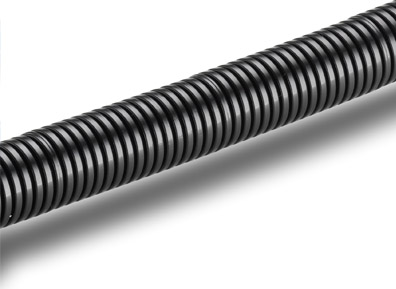A lot of hazardous area equipment is made of metal – including metallic hazardous area conduits that offer strength and liquid-tight properties – but non-metallic hazardous area conduits are also worth considering as they may be the better option in many cases.
Non-metallic conduits keep out water and dust, are easy to install and are naturally flexible, which means no impact on performance if the conduit moves slightly during use.
They can be used in all kinds of environments, making them a versatile choice for hazardous area conduits, and can also be used in retrofit projects as well as fresh installations.
As well as typically costing less than metallic conduits, non-metallic hazardous area conduits are more lightweight, and are easy to cut, again making installation easier if the conduit needs to be cut to length.
Corrugated construction strengthens the conduit further, and the materials used in their construction allow for extremely high flame retardation and corrosion resistance.
As with metallic conduits, non-metallic conduits can be specified in a variety of sizes, but also in different colours ranging from black and grey to high-visibility orange – not only making for an installation that is safe for use in a hazardous area, but also ensuring the conduit is easy to spot for anyone working in the area too.





